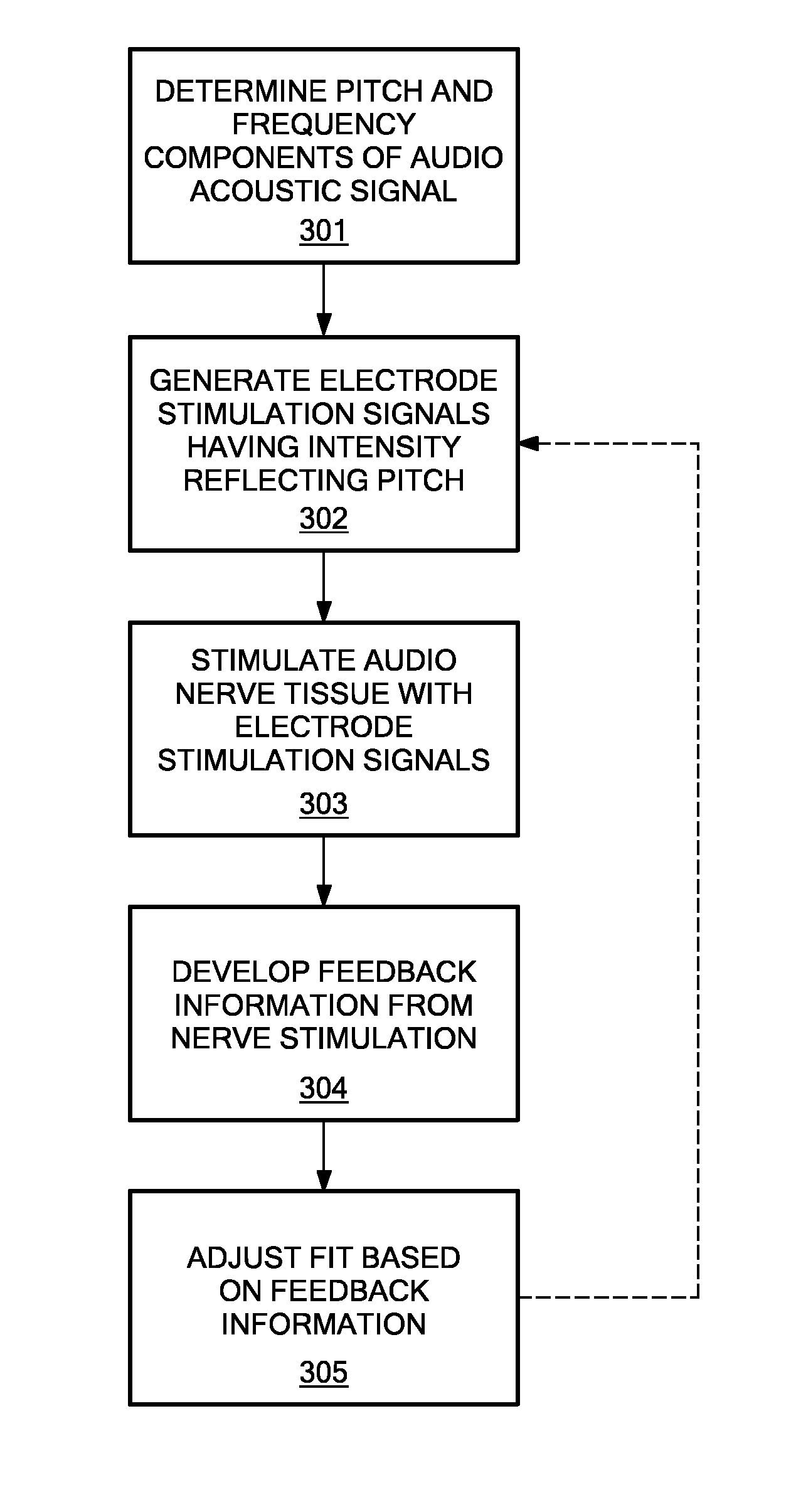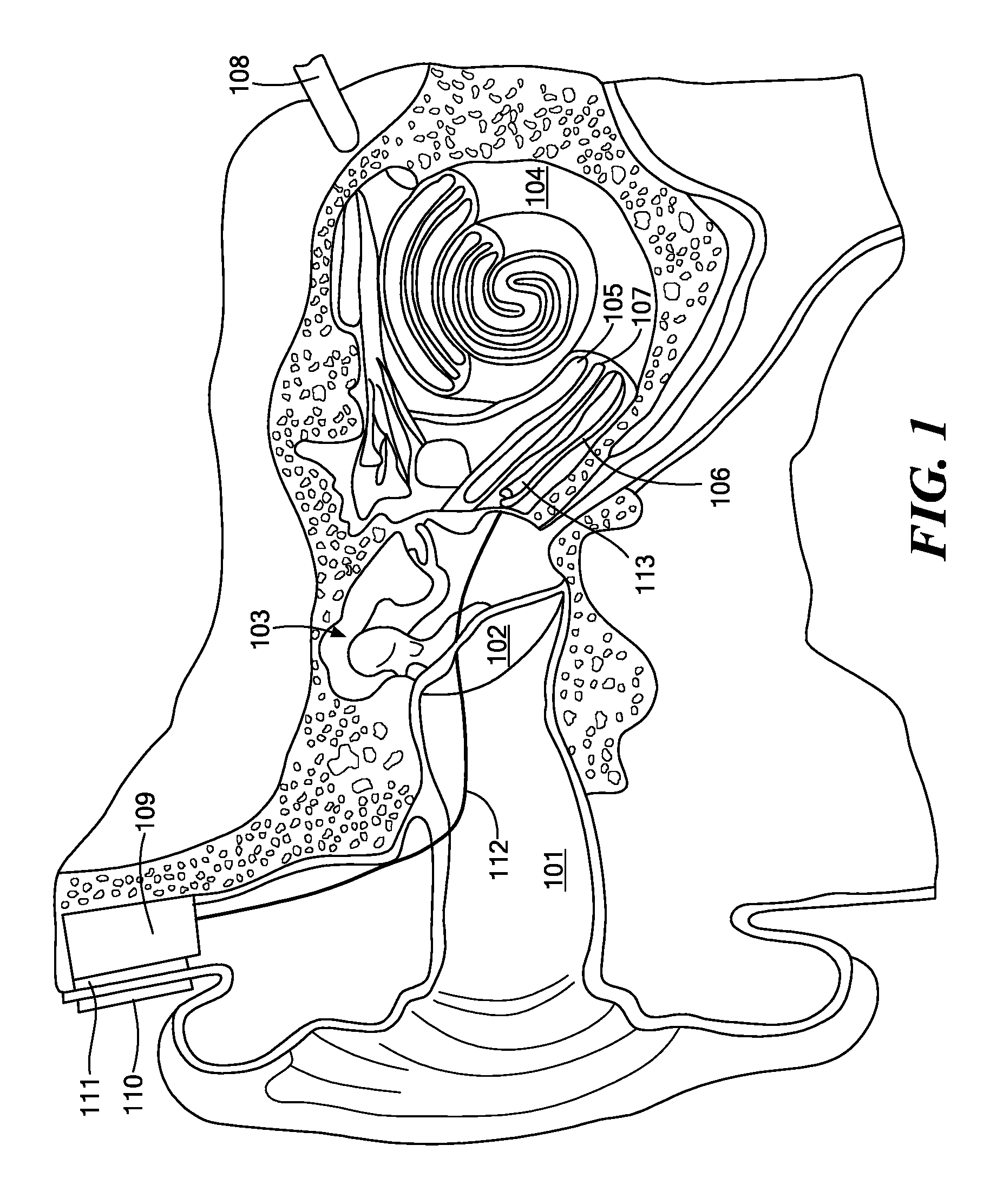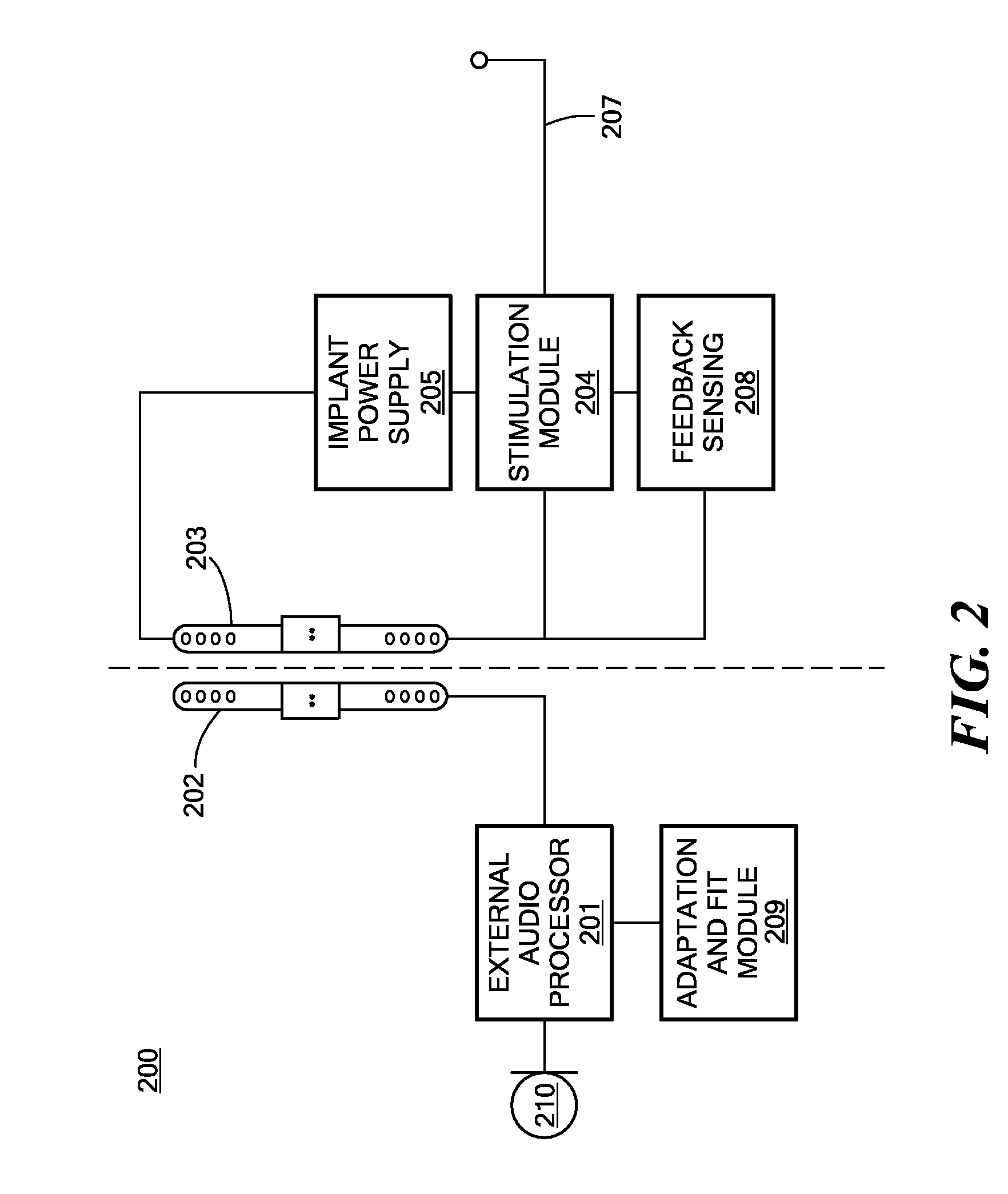Cochlear implant pitch intensity
a technology of cochlear implants and pitch intensity, applied in the field of audio prostheses, can solve the problems of limited current amplitude and inability to choose phase duration arbitrarily shor
- Summary
- Abstract
- Description
- Claims
- Application Information
AI Technical Summary
Benefits of technology
Problems solved by technology
Method used
Image
Examples
Embodiment Construction
[0021]Most pitch perception studies to date have focused on the influence of position and rate based mainly on relatively short electrode arrays using bipolar stimulation. See Collins L M, Zwolan T A, Wakefield G H, Comparison Of Electrode Discrimination, Pitch Ranking, And Pitch Scaling Data In Postlingually Deafened Adult Cochlear Implant Subjects, J. Acoust. Soc. Am. 1997; 101:440-455, which is incorporated herein by reference. But little attention has been given to the sensation of pitch in deeply inserted electrodes or the influence of stimulation intensity level on pitch perception. See Cohen L T, Busby P A, Whitford L A, et al., Cochlear Implant Place Psychophysics—Pitch Estimation With Deeply Inserted Electrodes, Audiol. Neurootol. 1996; 1:265-277, which is incorporated herein by reference.
[0022]This is rather surprising since the effect of acoustic stimulus intensity on perceived pitch was first reported over seven decades ago. See, Stevens S S, The Relation Of Pitch To Int...
PUM
 Login to View More
Login to View More Abstract
Description
Claims
Application Information
 Login to View More
Login to View More - R&D
- Intellectual Property
- Life Sciences
- Materials
- Tech Scout
- Unparalleled Data Quality
- Higher Quality Content
- 60% Fewer Hallucinations
Browse by: Latest US Patents, China's latest patents, Technical Efficacy Thesaurus, Application Domain, Technology Topic, Popular Technical Reports.
© 2025 PatSnap. All rights reserved.Legal|Privacy policy|Modern Slavery Act Transparency Statement|Sitemap|About US| Contact US: help@patsnap.com



